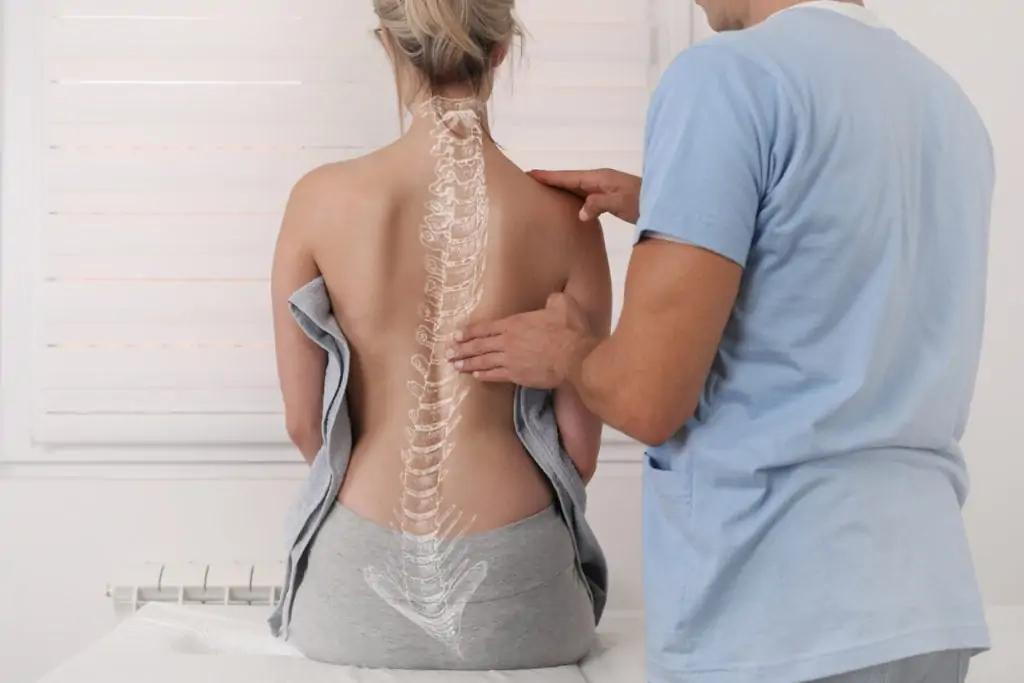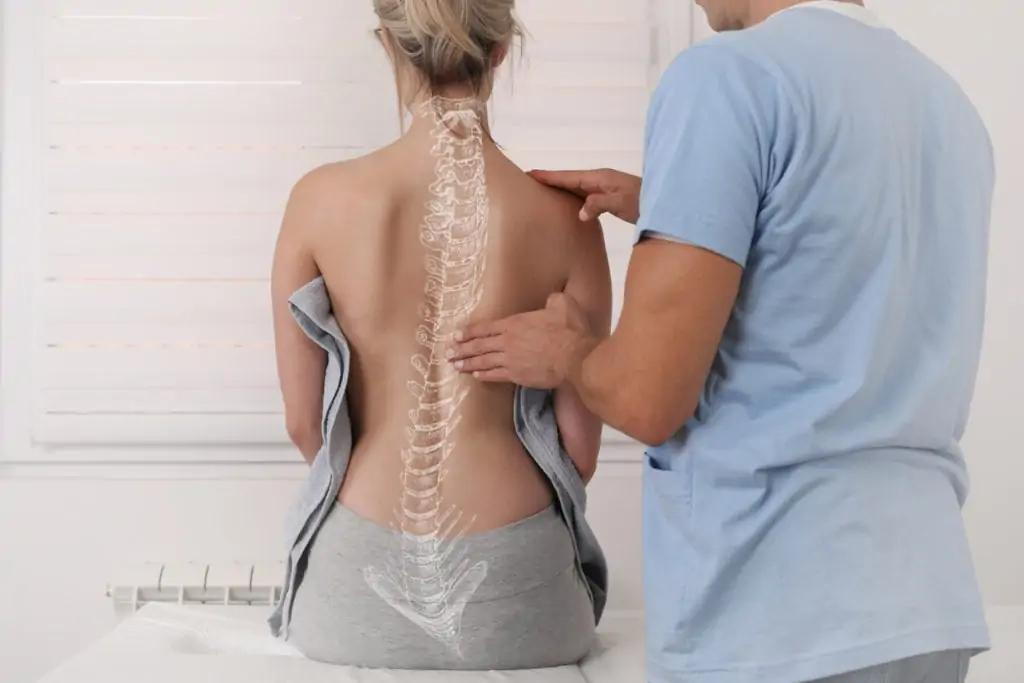
Detox Symptoms After a Chiropractic Adjustment
- posted: Jul. 15, 2021
Detox Symptoms After a Chiropractic Adjustment
“Detox” is certainly a buzzword of our day. Everyone from trendy juice bars to skincare companies claim that you need to be detoxed ASAP and their product or service will make that happen. You may have heard that a chiropractic adjustment can help you detox. Is that just a myth, or is there some truth to these detox symptoms claims? And what exactly does it mean to “detox”?
Does Chiropractic Care Help Get Rid of Toxins?
If we turn to the Merriam-Webster dictionary, the definition of detox is “a regimen or treatment intended to remove toxins and impurities from the body.” So, can a chiropractic visit help rid the human body of toxic materials? The answer is a simple and emphatic no.
Chiropractic treatment has a lot of great benefits but ridding your body of toxic substances isn’t one of them. In fact, when discussing what research shows about chiropractic, The American Chiropractic Association never once mentions “toxins” or “toxic release”. (It is an interesting thought, though. Imagine how busy chiropractors would become Monday morning!)
The myth linking spinal manipulation and detoxification may be traced to how some people feel immediately after an adjustment. If you’ve had chiropractic manipulations in the past, you may recall feeling somewhat strange for a minute or two afterward. Some people describe this as dizziness, lightheadedness, or even feeling a bit tipsy.
That brief experience isn’t toxins—substances that are foreign and harmful to your body—making their exit. Rather, what you’re feeling is the natural release of normal body chemicals and hormones, including dopamine. Dopamine is a “feel good” chemical, which explains the quick high or euphoric feeling that some people experience. And if this isn’t something you’ve experienced after a chiropractic treatment, don’t worry. Not everyone will feel a little bit of buzz afterward.
But What About the “Popping” Noise?
During a chiropractic session, some people will feel a popping sensation or even hear a “popping” sound. Contrary to what you might have read or been told, the popping noise is not a toxic release. What you’re actually hearing are the tiny air pockets that naturally exist in your spinal joints and the subsequent release of nitrogen oxide.
While it’s normal to feel or hear “pop”, don’t worry if you don’t experience it. The popping is not a good indication of whether or not your chiropractic manipulation was beneficial.

What to Expect After an Adjustment
If you’ve never been to a chiropractor before, you may wonder what the most common reaction to a chiropractic adjustment is. Responses to chiropractic manipulation vary from person to person and even visit to visit. Just because your friend told you he felt intoxicated does not mean that you will have the same experience. After an adjustment, people typically feel one of three ways:
- “I feel better.” Some people get adjusted and as soon as they hop off the table, their pain is reduced. But please do remember that the chiropractors are not miracle workers. It will take a course of treatment to adequately treat any underlying conditions. Feeling “better” is subjective. Someone in excruciating pain, say a 9/10 on the pain scale, may walk out of the office feeling pain that now rates a 4/10. Other patients with tight muscles may feel looser right after an adjustment. But keep in mind that you’re not getting rid of all that inflammation and tight muscles in one visit.
- “I feel the same.” Other people will walk away like nothing happened. They feel no worse for the wear, but don’t notice anything beneficial immediately. It can take more than one spinal adjustment to notice improvement.
- “I feel… weird.” And yet other people will feel strange as their body adjusts to the manipulation and the release of dopamine. In these cases, patients can simply lie on the table or sit in a chair for a minute or two until they feel balanced. Subsequent visits may reduce the natural high feeling, as the body gets used to chiropractic adjustments.
Helping Your Chiropractor Help You
There are three phases of chiropractic care:
- Relief care: You will receive pain relief and start feeling better.
- Corrective and restorative care: The focus is on getting your body back to 100% functioning.
- Wellness care: You are free from symptoms and receive maintenance adjustments to maintain your overall health.
During relief care in particular, people come in with pain and maybe apprehensive about seeing the chiropractor. During this phase, it’s important for a person to check in with themselves about how they are feeling after a spinal adjustment.
New patients should make note of how they feel:
- When they walk out of the clinic
- Later that night, and
- When they wake up the next morning
Letting your chiropractor know how you responded allows them to tailor your treatment. With your input and awareness, you can receive the most benefit with the least amount of discomfort while healing.
It’s not uncommon or a bad sign if you feel sore or uncomfortable after a chiropractic adjustment. Your body has to accommodate to the changes that are happening. For example, if your neck and shoulder muscles were tight from hunching over a computer all week, you may feel a headache soon after a chiropractic visit. Your muscles are irritated and even a little “angry” from being adjusted. Ice, rest, and gentle stretching can help alleviate any soreness after a spinal adjustment.

Experience the Benefits of Chiropractic Care
Pain medications only treat the pain, not the underlying condition. Both prescription and over the counter drugs can have serious side effects:
- Opioids like oxycontin and Vicodin carry the risk of dependence and addiction
- Long-term aspirin use can lead to stomach problems
- Overusing ibuprofen and acetaminophen may cause kidney damage
Spinal manipulations are an effective, non-invasive treatment for a number of health problems. Compared to medications, the “side effects”—brief headache or soreness—are minimal.
Make an appointment today to experience the benefits of a spinal adjustment. But if you want to detox, you’ll have to swing by the juice bar first.

Detox Symptoms After a Chiropractic Adjustment
- posted: Jul. 15, 2021
Detox Symptoms After a Chiropractic Adjustment
“Detox” is certainly a buzzword of our day. Everyone from trendy juice bars to skincare companies claim that you need to be detoxed ASAP and their product or service will make that happen. You may have heard that a chiropractic adjustment can help you detox. Is that just a myth, or is there some truth to these detox symptoms claims? And what exactly does it mean to “detox”?
Does Chiropractic Care Help Get Rid of Toxins?
If we turn to the Merriam-Webster dictionary, the definition of detox is “a regimen or treatment intended to remove toxins and impurities from the body.” So, can a chiropractic visit help rid the human body of toxic materials? The answer is a simple and emphatic no.
Chiropractic treatment has a lot of great benefits but ridding your body of toxic substances isn’t one of them. In fact, when discussing what research shows about chiropractic, The American Chiropractic Association never once mentions “toxins” or “toxic release”. (It is an interesting thought, though. Imagine how busy chiropractors would become Monday morning!)
The myth linking spinal manipulation and detoxification may be traced to how some people feel immediately after an adjustment. If you’ve had chiropractic manipulations in the past, you may recall feeling somewhat strange for a minute or two afterward. Some people describe this as dizziness, lightheadedness, or even feeling a bit tipsy.
That brief experience isn’t toxins—substances that are foreign and harmful to your body—making their exit. Rather, what you’re feeling is the natural release of normal body chemicals and hormones, including dopamine. Dopamine is a “feel good” chemical, which explains the quick high or euphoric feeling that some people experience. And if this isn’t something you’ve experienced after a chiropractic treatment, don’t worry. Not everyone will feel a little bit of buzz afterward.
But What About the “Popping” Noise?
During a chiropractic session, some people will feel a popping sensation or even hear a “popping” sound. Contrary to what you might have read or been told, the popping noise is not a toxic release. What you’re actually hearing are the tiny air pockets that naturally exist in your spinal joints and the subsequent release of nitrogen oxide.
While it’s normal to feel or hear “pop”, don’t worry if you don’t experience it. The popping is not a good indication of whether or not your chiropractic manipulation was beneficial.

What to Expect After an Adjustment
If you’ve never been to a chiropractor before, you may wonder what the most common reaction to a chiropractic adjustment is. Responses to chiropractic manipulation vary from person to person and even visit to visit. Just because your friend told you he felt intoxicated does not mean that you will have the same experience. After an adjustment, people typically feel one of three ways:
- “I feel better.” Some people get adjusted and as soon as they hop off the table, their pain is reduced. But please do remember that the chiropractors are not miracle workers. It will take a course of treatment to adequately treat any underlying conditions. Feeling “better” is subjective. Someone in excruciating pain, say a 9/10 on the pain scale, may walk out of the office feeling pain that now rates a 4/10. Other patients with tight muscles may feel looser right after an adjustment. But keep in mind that you’re not getting rid of all that inflammation and tight muscles in one visit.
- “I feel the same.” Other people will walk away like nothing happened. They feel no worse for the wear, but don’t notice anything beneficial immediately. It can take more than one spinal adjustment to notice improvement.
- “I feel… weird.” And yet other people will feel strange as their body adjusts to the manipulation and the release of dopamine. In these cases, patients can simply lie on the table or sit in a chair for a minute or two until they feel balanced. Subsequent visits may reduce the natural high feeling, as the body gets used to chiropractic adjustments.
Helping Your Chiropractor Help You
There are three phases of chiropractic care:
- Relief care: You will receive pain relief and start feeling better.
- Corrective and restorative care: The focus is on getting your body back to 100% functioning.
- Wellness care: You are free from symptoms and receive maintenance adjustments to maintain your overall health.
During relief care in particular, people come in with pain and maybe apprehensive about seeing the chiropractor. During this phase, it’s important for a person to check in with themselves about how they are feeling after a spinal adjustment.
New patients should make note of how they feel:
- When they walk out of the clinic
- Later that night, and
- When they wake up the next morning
Letting your chiropractor know how you responded allows them to tailor your treatment. With your input and awareness, you can receive the most benefit with the least amount of discomfort while healing.
It’s not uncommon or a bad sign if you feel sore or uncomfortable after a chiropractic adjustment. Your body has to accommodate to the changes that are happening. For example, if your neck and shoulder muscles were tight from hunching over a computer all week, you may feel a headache soon after a chiropractic visit. Your muscles are irritated and even a little “angry” from being adjusted. Ice, rest, and gentle stretching can help alleviate any soreness after a spinal adjustment.

Experience the Benefits of Chiropractic Care
Pain medications only treat the pain, not the underlying condition. Both prescription and over the counter drugs can have serious side effects:
- Opioids like oxycontin and Vicodin carry the risk of dependence and addiction
- Long-term aspirin use can lead to stomach problems
- Overusing ibuprofen and acetaminophen may cause kidney damage
Spinal manipulations are an effective, non-invasive treatment for a number of health problems. Compared to medications, the “side effects”—brief headache or soreness—are minimal.
Make an appointment today to experience the benefits of a spinal adjustment. But if you want to detox, you’ll have to swing by the juice bar first.
